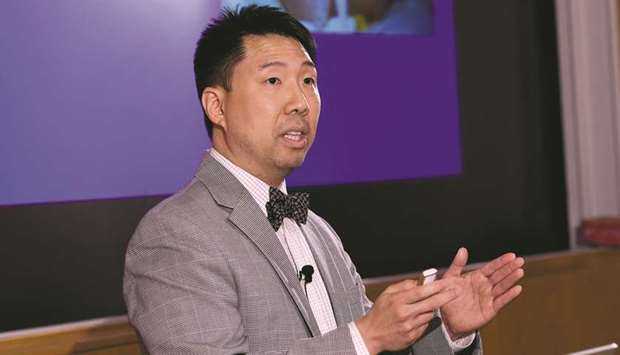The impact of the timing of umbilical cord clamping on the health of mothers and newborn babies was discussed at the first in a new season of Grand Rounds lectures at Weill Cornell Medicine – Qatar (WCM-Q).
Speaking to an audience of physicians, pharmacists, nurses and allied health professionals, Dr Ben H Lee, medical director of Neonatology Operations and associate chief medical officer at Sidra Medicine, discussed the existing research into how clamping the umbilical cord at different time intervals after birth affects the health outcomes of mothers and newborn babies.
Dr Lee, who is an affiliate faculty member at WCM-Q, also explained the physiology of the baby’s transition from receiving oxygen through the placenta to breathing through his or her own lungs and analysed the impact of ventilation and cord clamping on this transition. Finally, Dr Lee identified the key to successful cord clamping to best protect the health of both mother and baby, explaining that delayed cord clamping often has better outcomes than immediate clamping, but that there was no ‘one size fits all’ recommendation.
He said, “Overall, the stability of your cardiopulmonary transition at birth from the feotal to neonatal state is dependent not on time, not on 30 seconds, 60 seconds, two minutes or five minutes; it’s dependent on appropriate sequence of the baby breathing first and triggering the pulmonary transition, which then triggers the cardiovascular transition. Once the cardiovascular transition occurs, then you don’t need the placenta and then you can go ahead and clamp.
“So, we should think of it as physiologic cord clamping, not just as delayed cord clamping.”

WCM-Q Grand Rounds discussed umbilical cord clamping in newborns.
